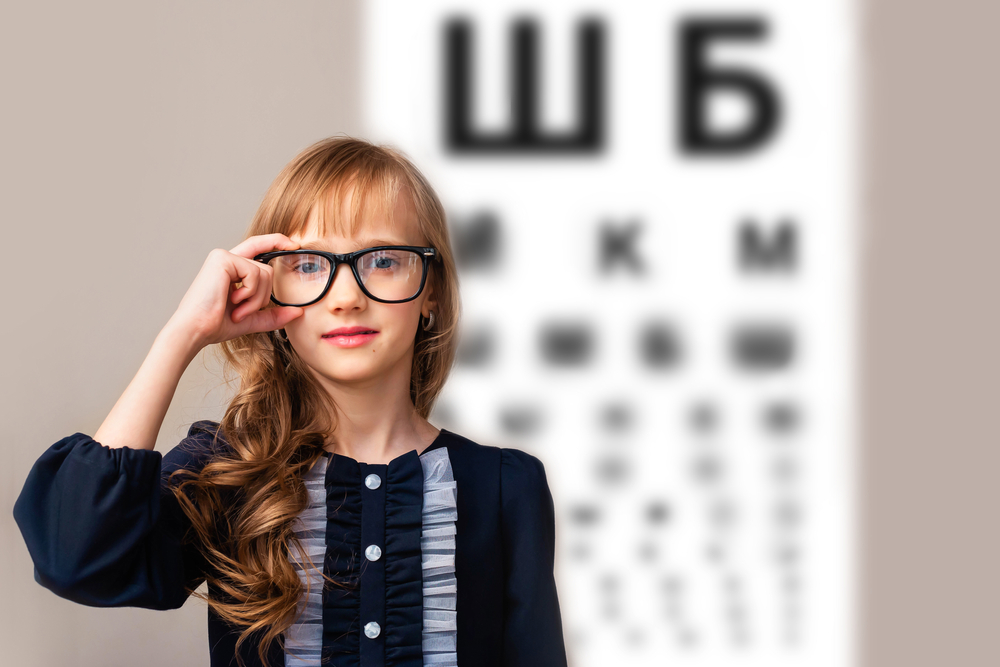
In recent years, the prevalence of myopia in children has been on the rise, with an estimated one-third of the world's population affected by this condition. Various factors contribute to the development of myopia, including genetics, environmental factors, and lifestyle choices. It's crucial to understand that myopia is not merely an inconvenience; it can have far-reaching implications, particularly on a child's academic performance and overall well-being.
What is Myopia?
Myopia is a condition that occurs when the eye's focusing power is too strong, causing light rays to converge in front of the retina instead of directly on it. As a result, distant objects appear blurred, while near objects remain clear. Some common indicators that you should be aware of:
- Squinting or frowning when trying to see objects at a distance
- Holding reading materials closer than usual
- Frequent complaints of headaches or eye strain
- Difficulty seeing the whiteboard or projector screen in the classroom
- Rubbing the eyes frequently
It's important to note that children may not always express their vision difficulties, making it crucial for parents and educators to be vigilant and seek professional advice if any of these signs are observed.
The Impact of Myopia on Academic Performance
Myopia can have a significant impact on a child's academic performance, as it directly affects their ability to see and engage with educational materials. Children with uncorrected myopia may struggle to read textbooks, see the whiteboard or projector screen, and engage in other visual learning activities, leading to frustration, decreased attention, and comprehension challenges. The inability to see clearly can discourage children from participating in classroom discussions or activities, as they may feel self-conscious or experience discomfort due to their vision impairment.
Additionally, the constant effort required to focus and see clearly can lead to eye strain, headaches, and fatigue, further impacting a child's ability to concentrate and retain information.
Vision problems can also negatively impact a child's confidence and self-esteem, potentially leading to social withdrawal and decreased motivation to engage in academic activities. By addressing myopia and providing appropriate vision correction and management strategies, children can overcome these obstacles and thrive academically.
Early Detection of Myopia through Regular Pediatric Eye Exams
Early detection of myopia is crucial for timely intervention and effective management. Regular pediatric eye exams play a vital role in identifying vision problems and ensuring that children receive the necessary support to optimize their visual abilities.
The American Optometric Association (AOA) recommends that children receive their first comprehensive eye exam at 6 months of age, another exam at age 3, and then annually thereafter. However, if you notice any signs or symptoms of vision problems, it is advisable to schedule an eye exam as soon as possible.
Early detection and management of myopia can help prevent further progression of the condition and minimize its impact on your child's academic performance and overall well-being.
The Benefits of Ortho-K for Myopia Management
Orthokeratology (Ortho-K) is a specialized myopia management technique that has gained increasing popularity in recent years. This non-surgical treatment involves wearing specially designed rigid gas permeable contact lenses overnight to temporarily reshape the cornea, reducing or eliminating the need for daytime vision correction.
Here are some notable benefits of Ortho-K for myopia management in children:
- Improved visual acuity: Ortho-K lenses can provide clear, crisp vision during the day, allowing children to engage in academic and extracurricular activities without the need for glasses or daytime contact lenses.
- Slowed myopia progression: Studies have shown that Ortho-K can effectively slow the progression of myopia in children, potentially reducing the risk of developing high myopia and associated complications.
- Increased self-confidence: By eliminating the need for daytime vision correction, Ortho-K can boost a child's self-confidence and encourage participation in various activities without the hassle of glasses or contact lenses.
- Improved eye health: Ortho-K lenses are designed to be worn overnight, reducing the risk of eye infections or complications associated with daytime contact lens wear.
- Convenience and versatility: Children can enjoy clear vision without the need for daytime vision correction, making it easier to engage in sports, outdoor activities, and other pursuits without the limitations of glasses or contact lenses.
Prioritizing Your Child’s Vision for Academic Success
Myopia is a prevalent condition that can have a profound impact on a child's academic performance and overall well-being. By understanding the signs, symptoms, and potential consequences of myopia, parents and educators can take proactive steps to address this issue.
If you're concerned about your child's vision, schedule an eye exam with Ridgeview Eye Care. We can provide personalized myopia management solutions tailored to your child's unique needs. Visit our office in Olathe or Lenexa, Kansas. Call (913) 270-8598 to book an appointment and take the first step towards improving your child's vision and academic success.
















